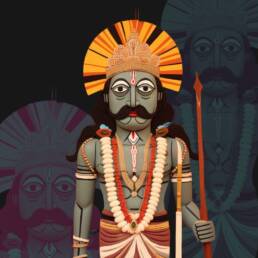From Umrao Jaan to Chandramukhi, courtesans in India are mostly known for their beauty, performing arts and stories of tragic romanticism. Though some of them went beyond their traditional image and led such an intriguing life that it became a compelling story to tell.
During 1857, the conflict between the British Raj and Indian soldiers, serving under the British command, rose to its peak when the East India Company started using a new variant of bullets for the Pattern 1853 Enfield rifle.
It was rumored to have been greased using the fat of pigs and cows – hurting the religious sentiments of both Hindus and Muslims. The timing of the arrival of these bullets could not have been much worse as the Indians were fuming after the hanging of Mangal Pandey.
The Kanpur cantonment, where the first sample of these bullets arrived, immediately became a hotbed of conflict. Tantia Tope and Nana Saheb, two of the most prominent Indian revolutionaries, were assembling a force that would soon participate in the first war of Independence in India.
Among the followers, there was one certain sowar from the Scottish Highlanders Infantry Regiment 42nd Cavalry, named Shamsuddin Khan. Having a decent salary for his commanding role in the regiment, Khan could afford to spend his leisure time at luxurious kothas.
On one of his visits to Lurkee Mahil, he was awe-struck by the beauty of Azizun Nisa, a popular courtesan in Kanpur. Their mutual admiration for each other soon turned into a romantic affair and Azizun Nisa vowed to protect both Khan and his rebellious associates from the Britishers.
Soon her residence became the headquarters of covert meetings to plot strategies against the colonial force. One evening a high-ranking British officer came to her Kotha and started bragging to his fellow officers about killing an Indian sowar at the regiment only to establish his supremacy.
When Azizun Nisa overheard the conversation, she became determined to avenge the death of her countryman. Together with Khan, she formulated a plan and followed the officer to a club he frequented every evening.
Azizun Nisa, with her ace skills, lured him out of the club and into a dark alley where Khan was waiting with a dagger. As he jabbed the dagger into the officer’s heart, she realized that the initial purpose of protecting the love of her life had now transformed into protecting her motherland.
Thus, a new chapter in Azizun Nisa’s life had begun where she had to learn the skills of using firearms and swords as opposed to performing arts. With the new purpose of life, she quickly rose through the ranks of prominent leaders in the Kanpur revolution and started to form an armed brigade of women.
On the night oft June 1, 1857, when Nana Sahib held a secret meeting with the top leaders of the revolution to go all guns blazing against the Raj, Azizun Nisa was one of the handful of women who were present there.
Six days later, the ‘Siege of Cawnpore’ broke out. Azizun Nisa oversaw espionage and led her brigade of women to nurse the injured and at times fight on the battlefield along with her fellow countrymen.
On June 23, when the rebels brought the lifeless body of Shamsuddin Khan to Azizun Nisa’s doorstep, all hell broke loose. She took up the arms and decided to kill as many Britishers as she could until her last breath.
What happened after that became folklore. According to a section of historians, she was captured and tried in an army court, run by General Henry Havelock.
Mesmerized by her beauty, General Havelock had offered mercy in exchange for the information regarding Nana Sahib’s most trusted commander Azimullah Khan’s whereabouts.
Azizun Nisa’s refusal to betray her comrade brought her intolerable torture and subsequent execution at the hands of the enemy.
Another section of the residents of Kanpur believed that they saw her two years later, riding on a horseback, disguised in a man’s attire with a gun in her hand and sword hanging from the side of her waist.
Azizun Nisa’s valiant effort in the Indian independence movement should have resonated with the same regard as that of Rani Lakshmi Bai. Sadly though, history had failed to acknowledge her with due credit and labeled her as only a ‘tawaif’.
Sources:
Pandey, Sugandhaa. “Azizun Nisa: The Courtesan & Strategist Who Played A Crucial Role In The Revolt Of 1857”. https://feminisminindia.com/2021/09/29/azizun-nisa-the-courtesan-strategist-who-played-a-crucial-role-in-the-revolt-of-1857-indianwomeninhistory/
Chowdhury, Amlan Home. “Meet a Tawaif at Cawnpore Who Spied for Baagis in 1857”. https://www.thecitizen.in/index.php/en/NewsDetail/index/7/19760/Meet-a-Tawaif-at-Cawnpore-Who-Spied-for-Baagis-in-1857?infinitescroll=1




